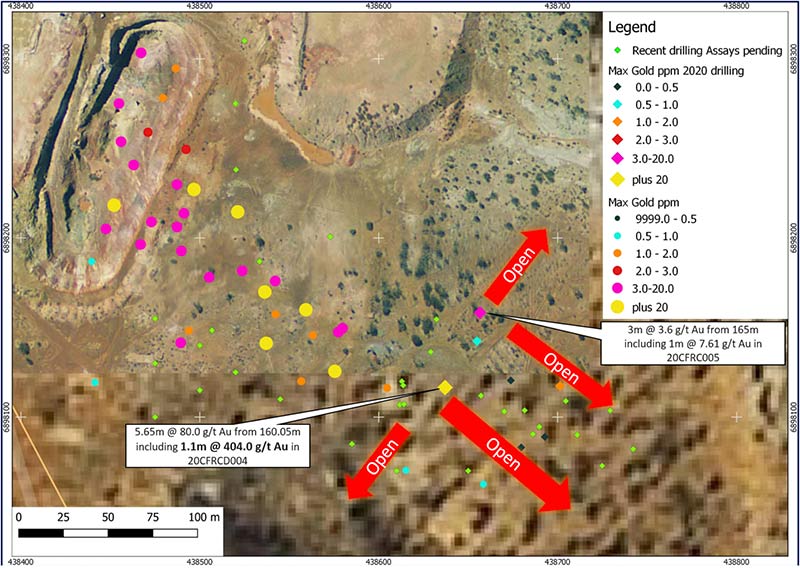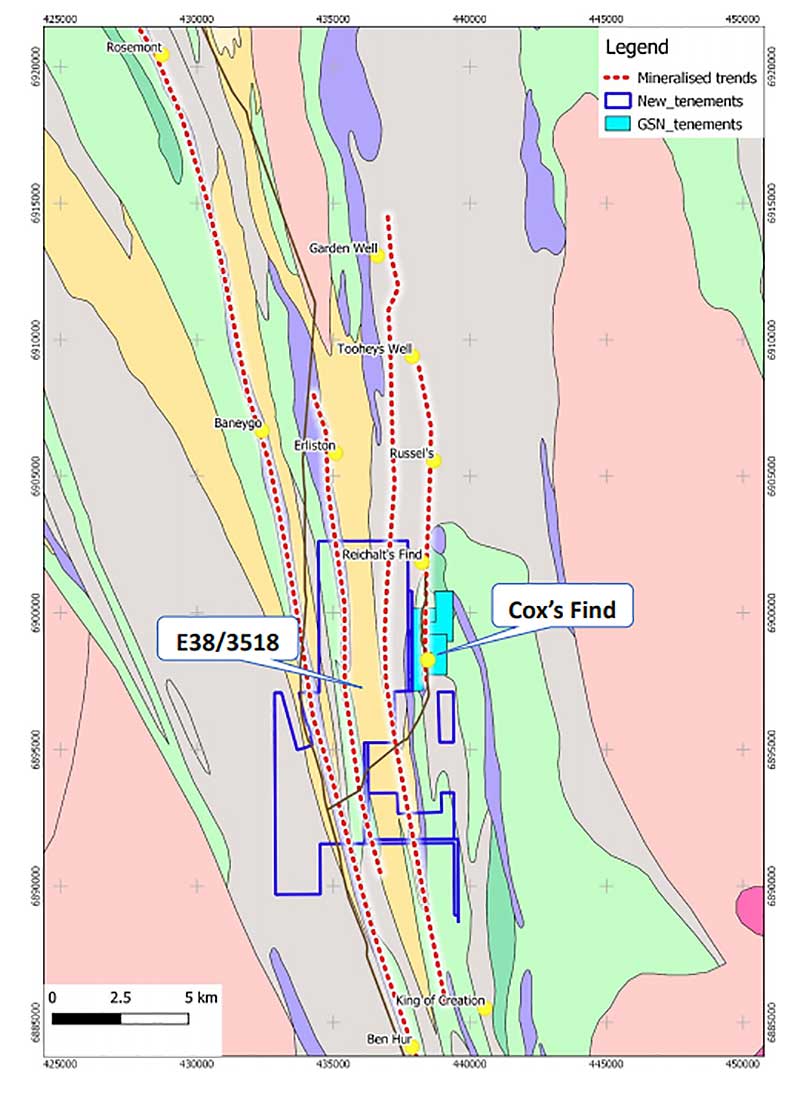‘Highest grade intersection to date’: Great Southern Mining hits +400g/t gold at Cox’s Find

Great Southern Mining hits +400g/t gold at Cox’s Find (Image: Getty Images).
Special Report: The 5.65m-long intercept at 80g/t is interpreted to be an extension of the main lode at Cox’s Find, a historic Western Australian mine which produced ~77,000 ounces of gold at 21g/t in the late 1930’s.
This intercept includes a ‘bonanza’ grade intercept of 1.1m at 404g/t gold, 164m from surface.
The diamond hole — drilled ‘down plunge’ from the known historic Cox’s Find workings — was part of a five-hole program designed to intersect the high-grade area identified from a late 2019 drill campaign, which returned hits like 5m at 14.54g/t gold.
Diamond drilling preserves the rock, instead of shattering it into little pieces like reverse circulation or air core drilling.
The program is designed to shine a light on the structural orientation and constraints of the high-grade mineralisation, so Great Southern can effectively ‘map’ where the orebody goes.
Right now, the gold keeps going in multiple directions.

Importantly, this bonanza intersection correlates to Great Southern’s current geological model — that high-grade mineralisation occurs at the intersection of the southeast plunging main lode and the Cox’s Find shear zone.
Shear zones are the source of the deep gold-bearing fluid.
Assay results for the remaining diamond holes are still outstanding, but these early results reaffirm the high-grade nature of the Cox’s Find deposit, Great Southern chief operating officer Mark Major says.
“This is a very exciting result and demonstrates the extremely high-grade nature of this deposit; in fact, it’s the highest-grade intersection recorded in any drill data at Cox’s Find to date and it has come from Great Southern’s first diamond program,” he says.
“This now validates our view that this deposit has an extremely high-grade component to it which requires the application of modern-day exploration techniques to define its extent.
“We are getting a good indication that the mineralisation is persistent at depth and along strike.”
The focus now is to trace the high-grade component down plunge along strike to expand the deposit, Major says.
“If we are successful in this next phase, then the full extent of this asset will start to become evident.”
Reverse circulation (RC) drill program
In conjunction with the diamond drilling program, a 5618m, 32-hole RC drill campaign around the Cox’s Find deposit has also been completed.
This drilling is designed to test the lateral (width) extensions of the known mineralisation as well as testing the ‘down plunge’ extension on the historically mined high-grade lode.
Of the results received from the first six RC holes, significant intersections included 3m at 3.6g/t gold from 165m, including 1m at 7.61g/t.
This hit is of particular interest because it shows the size potential of this deposit (or deposits), Great Southern says.
Not only is it interpreted to be ‘along strike’ from the historic main lode, it is also some 50m from any historical workings. These high-grade systems are known to be hit and miss making this a significant find.
Assay results are still pending for the remaining holes.
Picking up more ground around Cox’s Find
Following the acquisition of the ~4sqkm Cox’s Find in August 2019, Great Southern has also focused on expanding the project tenure.
Earlier this week, the explorer lodged applications over four strategic and highly prospective tenements next door to Cox’s Find.
The 50sqkm area contains a number of historical workings and provides the company with additional ‘walk-up’ drill targets.
The tenement applications include over 12km of access to the clearly identifiable mineralised trends that host the multi-million-ounce Garden Well and Rosemont gold deposits.
“There are multi-million-ounce deposits such as Garden Well only 12km away with Rosemount, a mere 20km from Cox’s Find,” Major says.
“With the potential for such a significant increase in land holding, underpinned by the high-grade Cox’s Find project, Great Southern is well placed and well-funded to unlock further potential in the project through discoveries and potentially adding scale to the project.”

This article was developed in collaboration with Great Southern Mining, a Stockhead advertiser at the time of publishing.
This article does not constitute financial product advice. You should consider obtaining independent advice before making any financial decisions.
Related Topics

UNLOCK INSIGHTS
Discover the untold stories of emerging ASX stocks.
Daily news and expert analysis, it's free to subscribe.
By proceeding, you confirm you understand that we handle personal information in accordance with our Privacy Policy.








